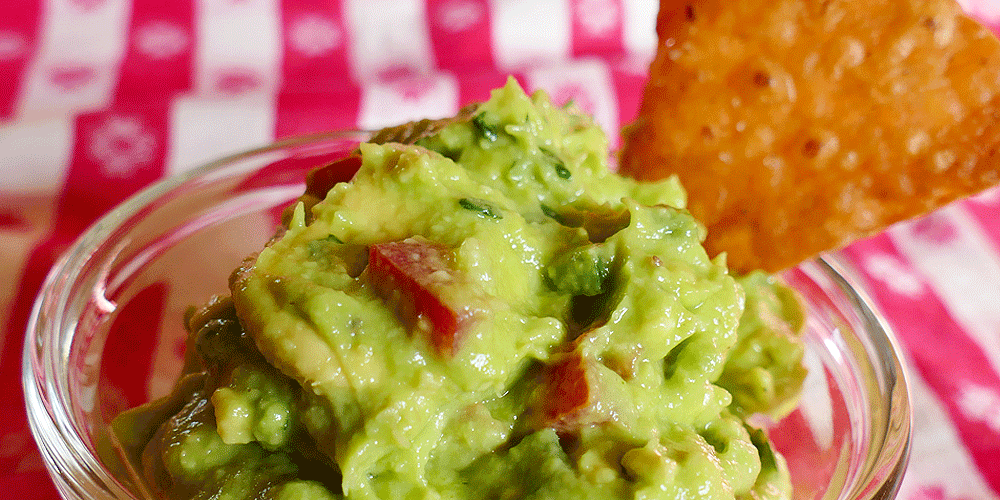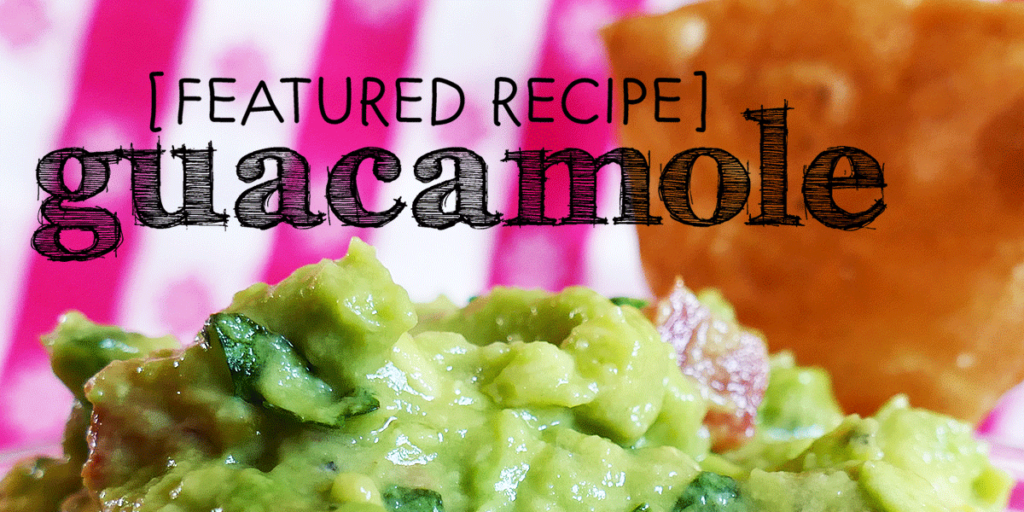The difference between fresh homemade guacamole and store-bought guac is like the difference between a little glimpse of heaven and something they’d serve up in a Speedy Gonzales cartoon. You’d be better off using the store-bought stuff for wallpaper paste. Make guacamole when produce is at its peak and you’ve got a simple picnic dish that strides blithely and boldly into the sublime.
Which is what we have here.
Just don’t be timid when you make it. Good guac is made con cojones, as bold, intense, and refreshing as a
late-summer cloudburst.
—Rachel
Ingredients
- four large or five medium ripe avocados
- 3/4 to one cup fresh tomatoes, diced
- 1/3 cup onion, diced
- two jalapeños, diced
- two garlic cloves
- 1/2 cup cilantro leaves, chopped
- two limes
- salt & pepper, to taste
Directions
This is an easy one that doesn’t take long to make—which is real blessing when you consider that it really should be eaten the same day it’s made. Serving brown, gloppy day-old guacamole is not the best way to make or keep friends.
Cut the avocados in half, remove the pit, and spoon the avocados into a bowl. Then add the tomatoes, onions, and jalapeños. Run the garlic through a press and scrape it into the bowl.
Squeeze in the juice from two limes, then use a fork or a wooden spoon to mash everything together.
Make sure everything’s blended well, while keeping the avocados a little chunky.
Check for taste, and add salt & pepper as needed.

Homemade Tortilla Chips (Optional):
Store-bought tortilla chips can seem like sacrilege in front of a transcendent bowl of guacamole, so I made two batches of my own, one out of flour, and the other from corn tortillas.
Corn Tortillas
If you got the corn route, try to avoid mass-market tortillas and try to find ones from Mexico or local ones made with some attention to quality. Depending on the size of the tortillas, take 8 to 10 tortillas and cut each one into 6 to 8 triangular wedges.
Heat a thin layer (about 1/4 to 1/2 inch) of canola oil in a cast-iron or non-stick skillet at medium to medium-high until a piece of tortilla sizzles in it, but not so hot that the oil smokes. Fry the tortilla pieces for about 30 seconds a side, until they’re a medium brown. (I tried a recipe that said to fry them for a minute and a half a side and ended up with a stack of inedible crap-brown Yield signs.)
Place the fried chips on a paper towel and sprinkle lightly with sea salt.
Flour Tortillas
For flour chips, put two cups of flour into a bowl and add 1/2 cup of warm water. Knead the dough for about 5 minutes, making sure it stays doughy—not too sticky, and not so dried out that it crumbles.
If it gets sticky, add a little more flour as you work the dough until the stickiness goes away. If it dries out, add a little more warm water, watching that the dough doesn’t veer over into sticky.
Once you’re done kneading, keep the dough in the bowl, toss a damp towel over the bowl, and let it sit for about fifteen minutes.
Then take the dough and break it into 8 equal-size pieces. Put a piece between two 10-inch square pieces of parchment paper, then press down on the dough (through the top piece of paper) using a flat-bottomed plate or pan that’s at least 6 inches across.
Press the dough down until it’s about 1/8-inch thick. If necessary, using a rolling pin to further flatten the dough. Repeat for each piece of dough.
The resulting pieces should be pretty round, but you can always trim them if you want them to be really round. Brush each side of the resulting tortillas lightly with vegetable oil.
Then cut or slice each tortilla into 6 or 8 wedges, depending on how big you want your chips to be, and place the pieces on a griddle or cast-iron pan preheated at medium to medium high. Cook each side for about a minute to a minute & a half. They should develop light brown spots & puff up a little—don’t cook them so long that whole sections of the chips turn brown (or worse).
Put the chips on a plate, sprinkle with sea salt, and you’re ready to dip.
Recipe courtesy Chef Jean-Luc Bataille

